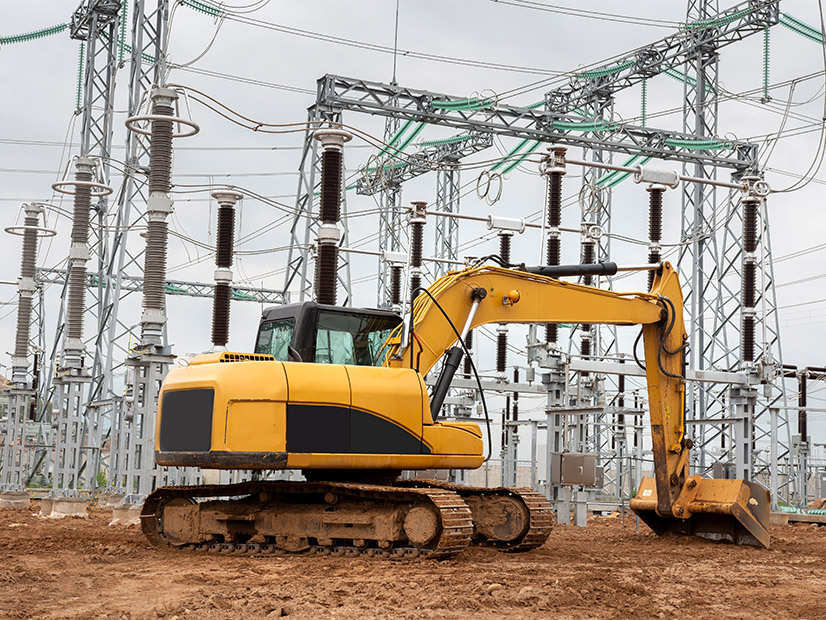
A study released by the Lawrence Berkeley National Laboratory last month found that interconnection costs have been steadily rising for decades in the PJM region and are disproportionately high for renewable resources.
“The core finding that we’ve had for PJM is overall interconnection costs have increased both for projects that have completed all the required interconnection studies, as well as for those projects still moving through the interconnection process,” said Jo Seel, principal scientific engineering associate with the lab. The study is part of a series looking at interconnection costs for each RTO in the U.S.
Drawing off available interconnection studies released by PJM, the study found that costs for generators that have successfully connected to the grid have doubled from 2000 through 2019. The average for completed projects has grown even more sharply over recent years, rising from $29/kW between 2017 and 2019, to $240/kW between 2020 and 2022.
Costs are highest for projects that ultimately dropped out of the interconnection process, at $563/kW, which Seel said could point to network upgrades being a driving factor behind projects leaving the queue.
“It seems to me pretty likely that high interconnection costs make a certain set of projects infeasible and they cannot move forward,” Seel said. “We see that especially well for solar projects, where the upgrade requirements for some of these solar projects is up to nearly 40% of the overall project [capital expenditures] … that just breaks project economics, so I think that’s a pretty good explainer of why some of these solar projects then do not move forward and ultimately withdraw.”
The study also found a wide gap in network upgrades for different resource types. Natural gas carries some of the lowest costs, with an average of $24/kW, while offshore wind was the highest at $385/kW. Onshore wind saw average interconnection costs of $136/kW, while solar projects had costs around $253/kW.
Scale of Rising Costs Questioned by PJM
PJM Senior Director of Interconnection Planning Jason Connell said he believes the study overrepresents the extent that network upgrade costs have grown because of the inclusion of feasibility studies in the data. Because the studies identify the upgrades that an individual project would require to interconnect prior to cost allocation between projects, he said it could result in double counting of costs if multiple projects needed the same upgrade.
“The issue is that those projects for which they’re scraping the data are in various stages of completion: some very early on in the feasibility stage, and some have signed and executed an interconnection service agreement. It doesn’t make sense to compare them as an aggregate, because those study costs get refined the further along a project is in the study process,” he said.
Seel said that wherever possible, the Berkeley team looked for the most recent and accurate data available, and only a small number of feasibility studies were included in their data. In those cases, they sought to correct for the possibility of double counting and, he believes, were able to formulate accurate findings.
“We used the best available data to categorize these costs,” he said.
Independent Market Monitor Joe Bowring said data accessibility at PJM has long been a challenge, making it difficult for studies to be conducted.
“If PJM wants more accurate studies done, they should provide more accurate data,” he said.
As the grid becomes increasingly complex and built up, Connell said costs are bound to rise to a degree. While the first few projects in a region may require replacing equipment at a substation, subsequent installations may necessitate the reconducting of lines or substation rebuilds. Despite the growing investments needed, there’s been no slowdown in the number of new requests for interconnection studies across resource types, including developers looking to install renewables.
“Each upgrade is an order of magnitude of difference for each of the newer projects,” he said.
The new approach for studying interconnection requests approved by FERC last year could provide more clarity on the costs developers could face, Connell said. The new methodology clusters projects together both for identifying network upgrades and allocating costs. It also requires that deposits be made throughout the process to discourage speculative filings. (See FERC Approves PJM Plan to Speed Interconnection Queue.)
Seel pointed to the medium-term transmission plans conducted by MISO as another approach for lowering network upgrade costs. The RTO’s plans identify larger network upgrades, and it makes the necessary investments itself, rather than allocating the expense between individual generators based on interconnection requests. A more holistic and forward-looking approach to evaluating grid upgrades can create efficiencies that outweigh the investments, he said.
Bowring said he’s hopeful PJM’s new interconnection process will decrease costs by making the interconnection process more efficient and reducing speculative filings, but he believes that retaining competition and accurate costs in the buildout of transmission is important to ensuring that generation is sited in the most economical locations. Upgrade costs rising are appropriate so long as they reflect the reality of the cost to interconnect, he said.


